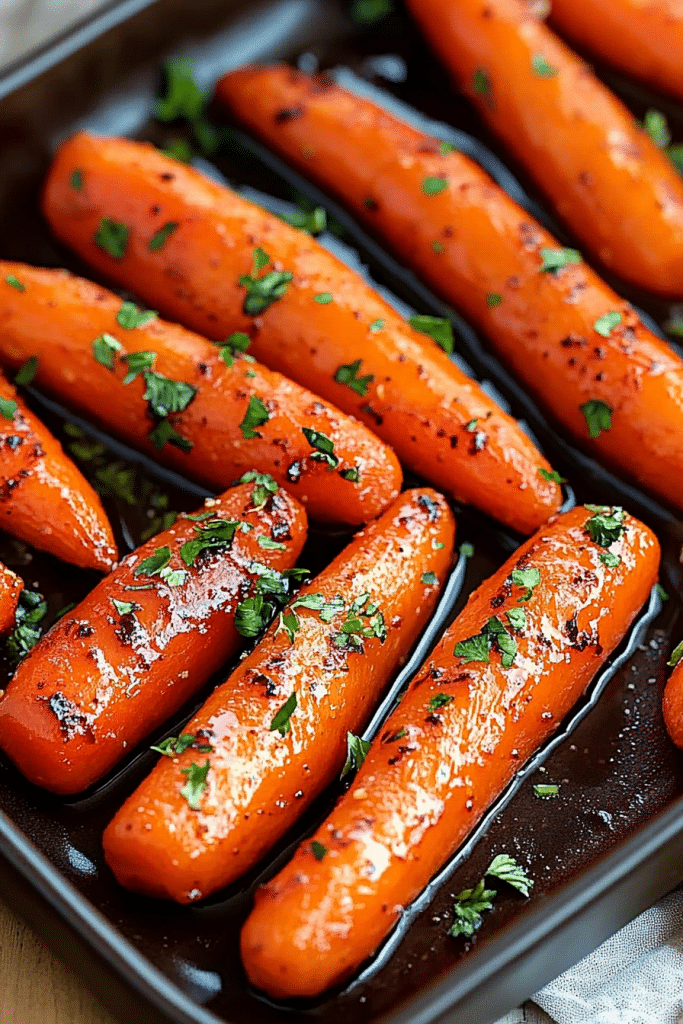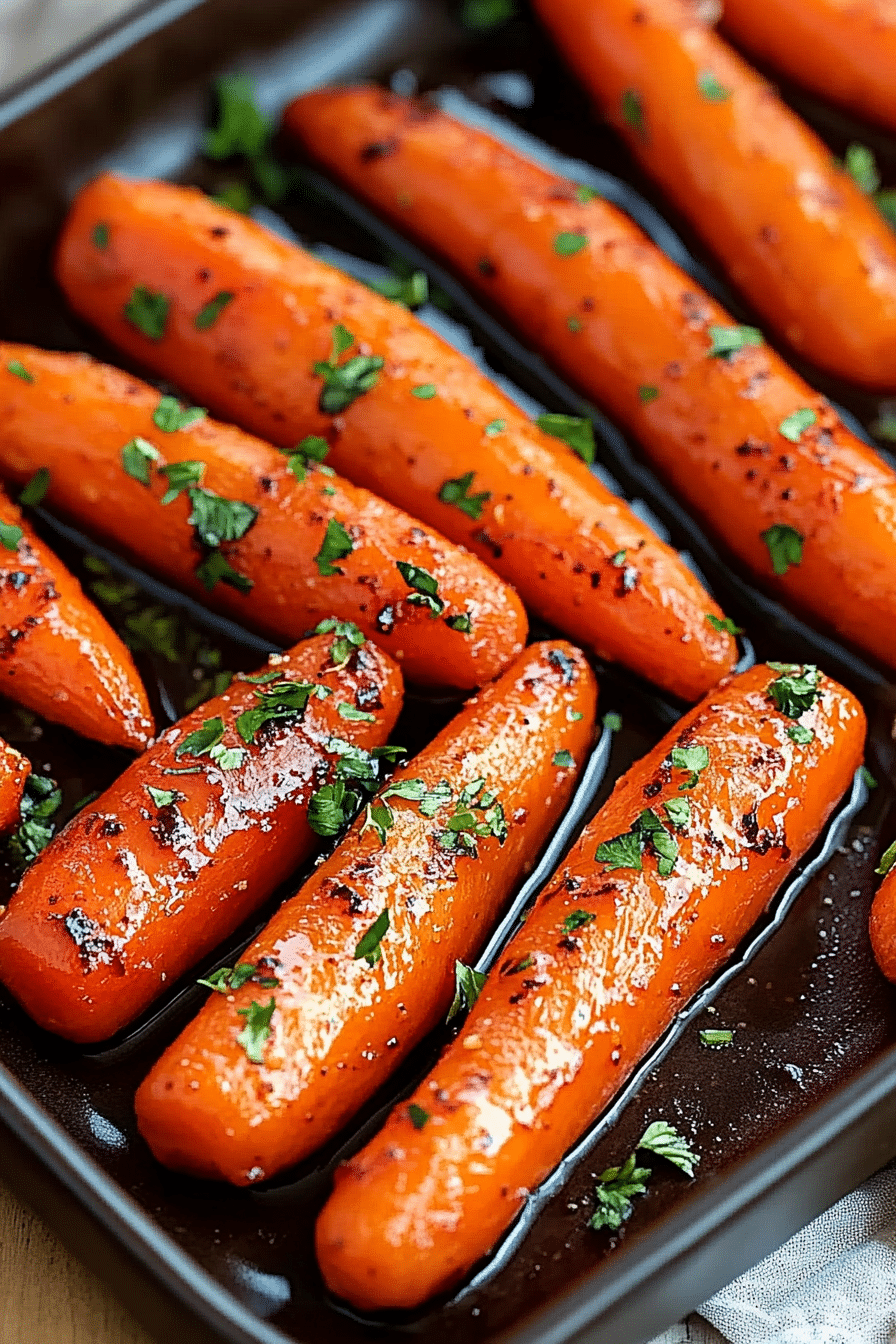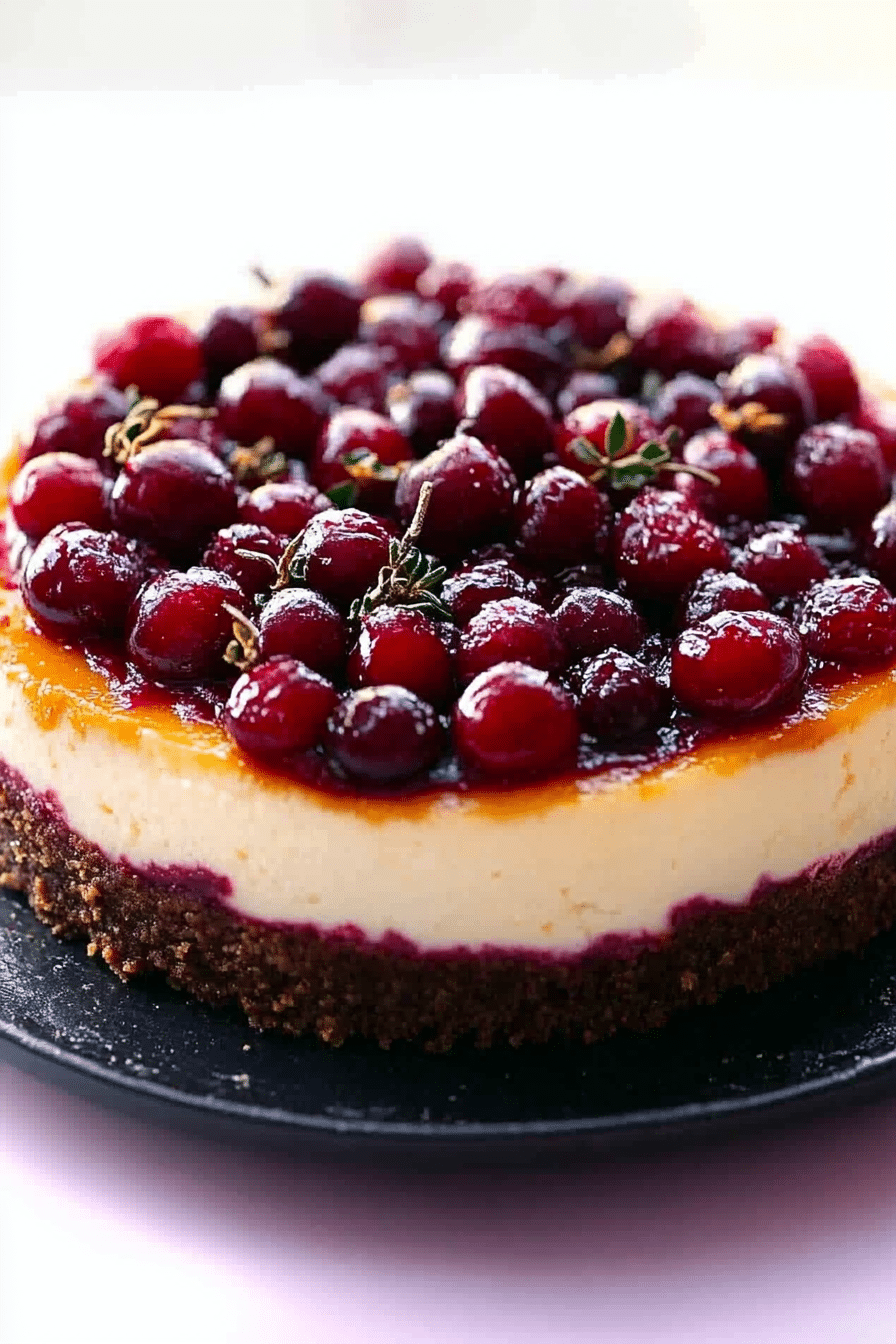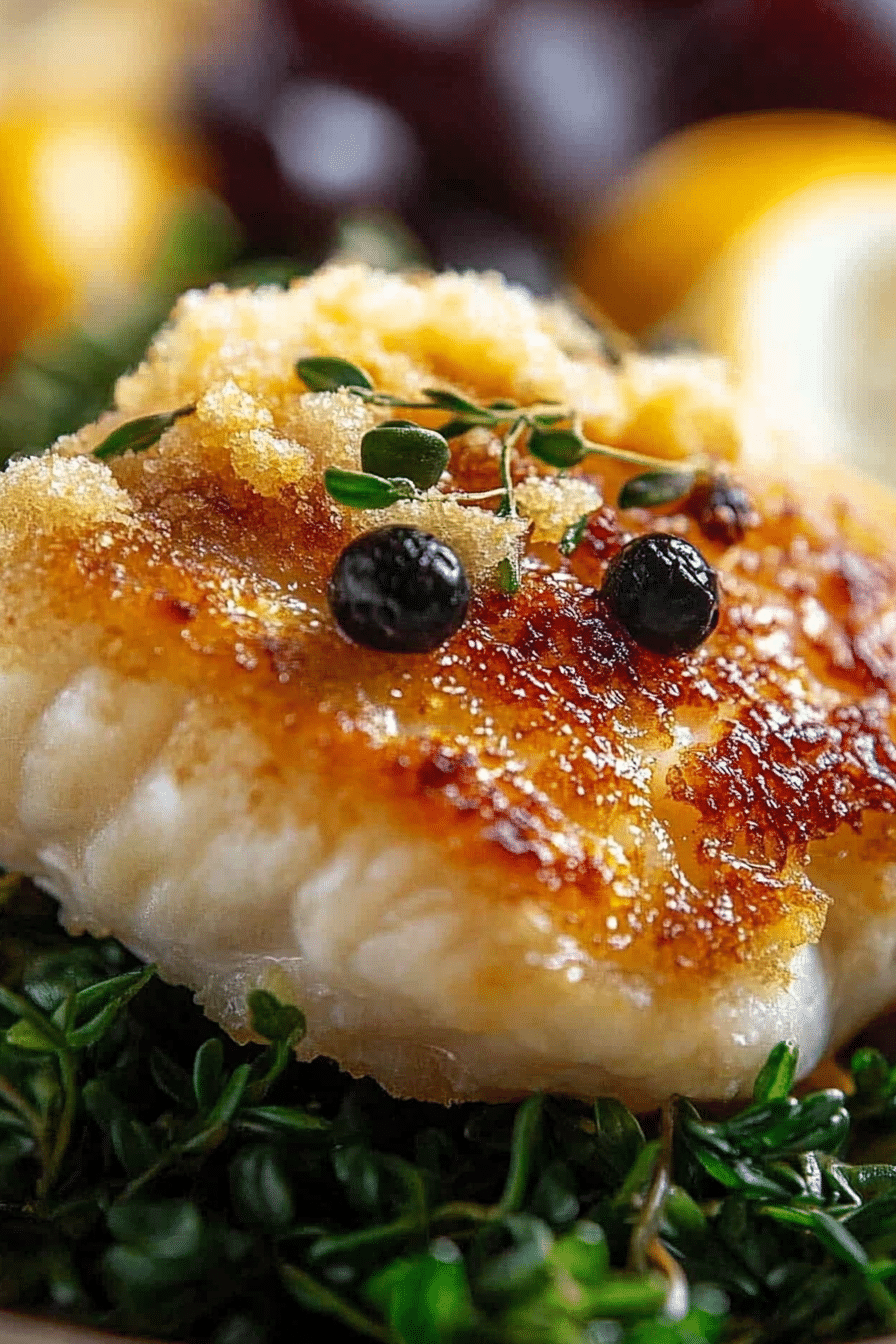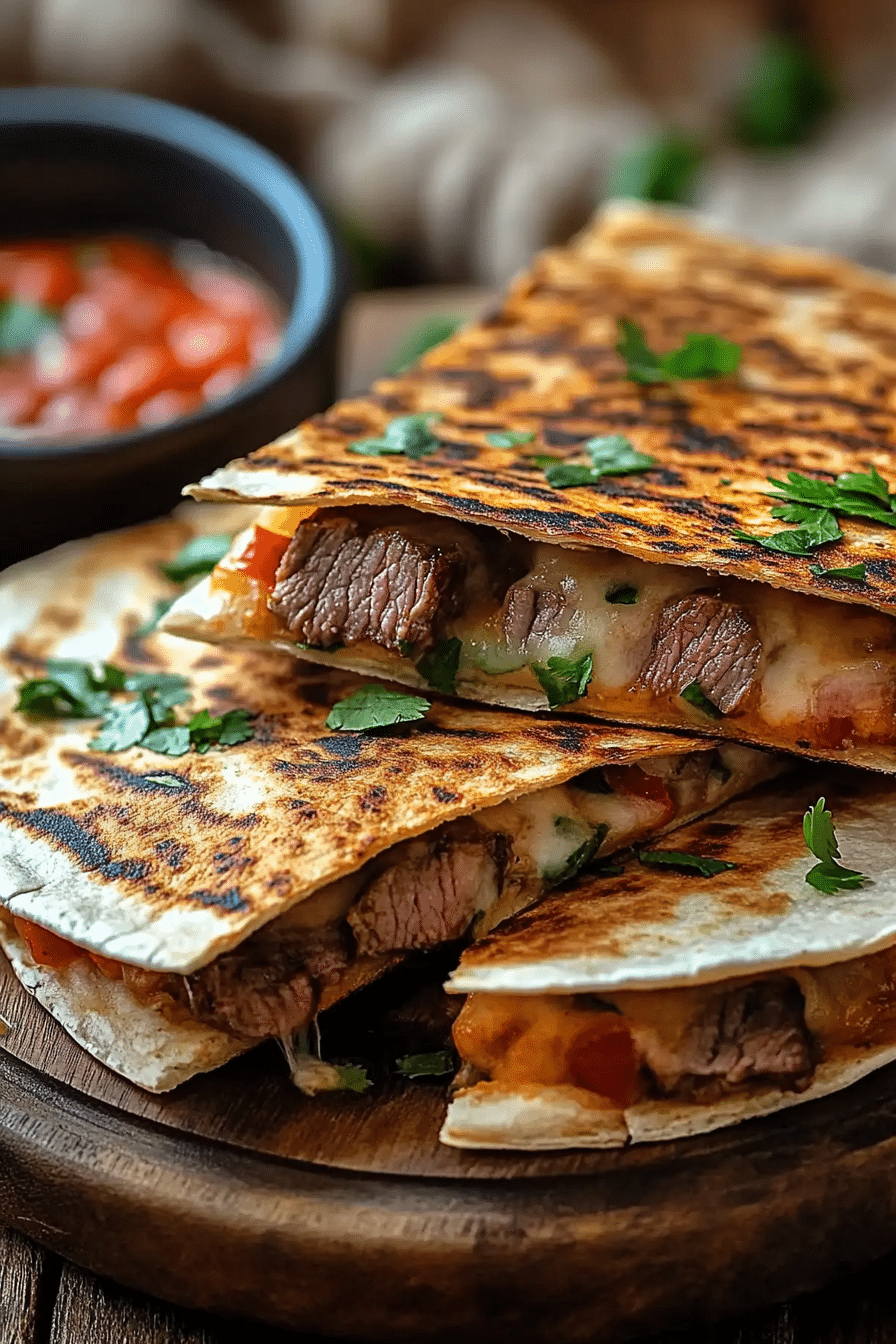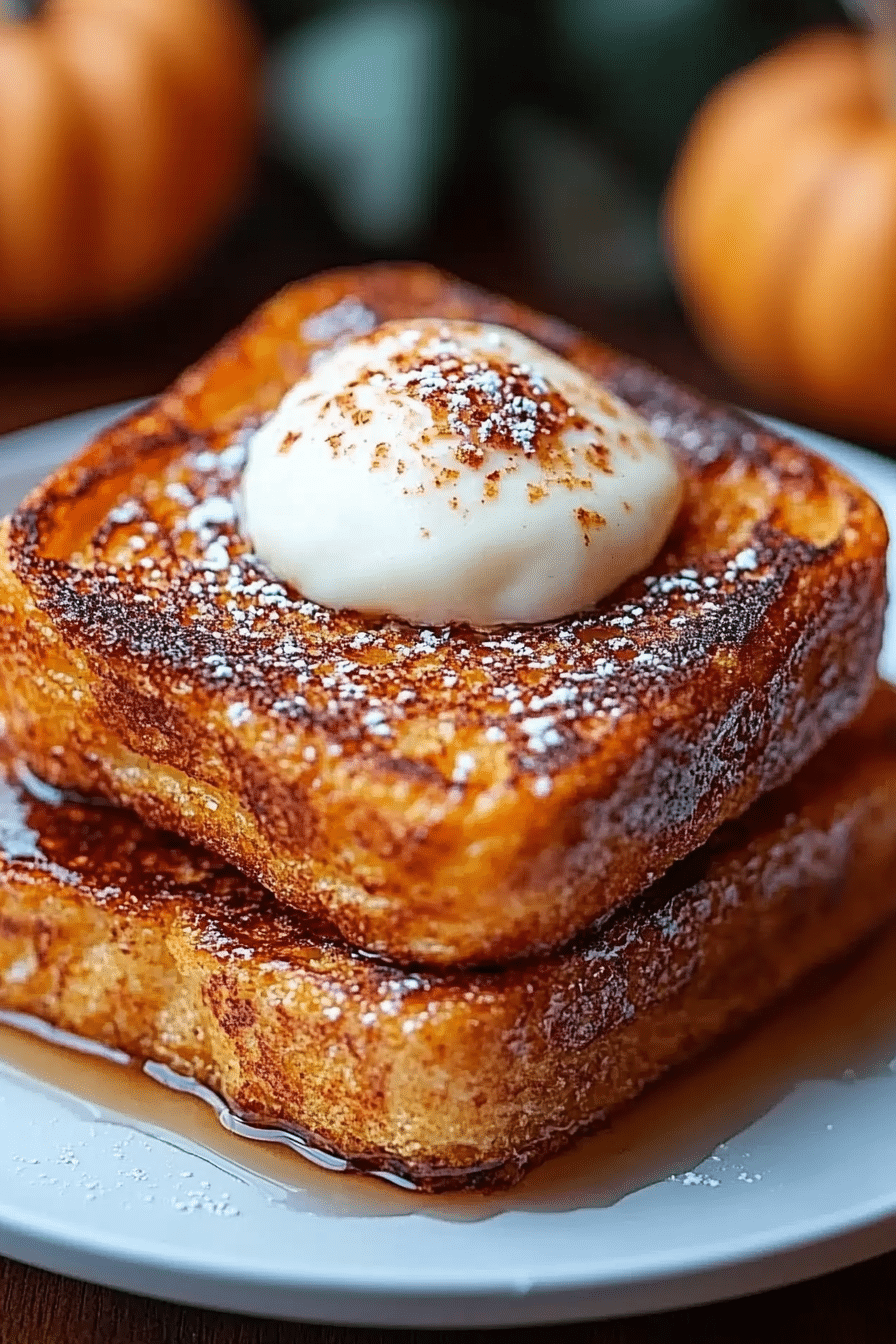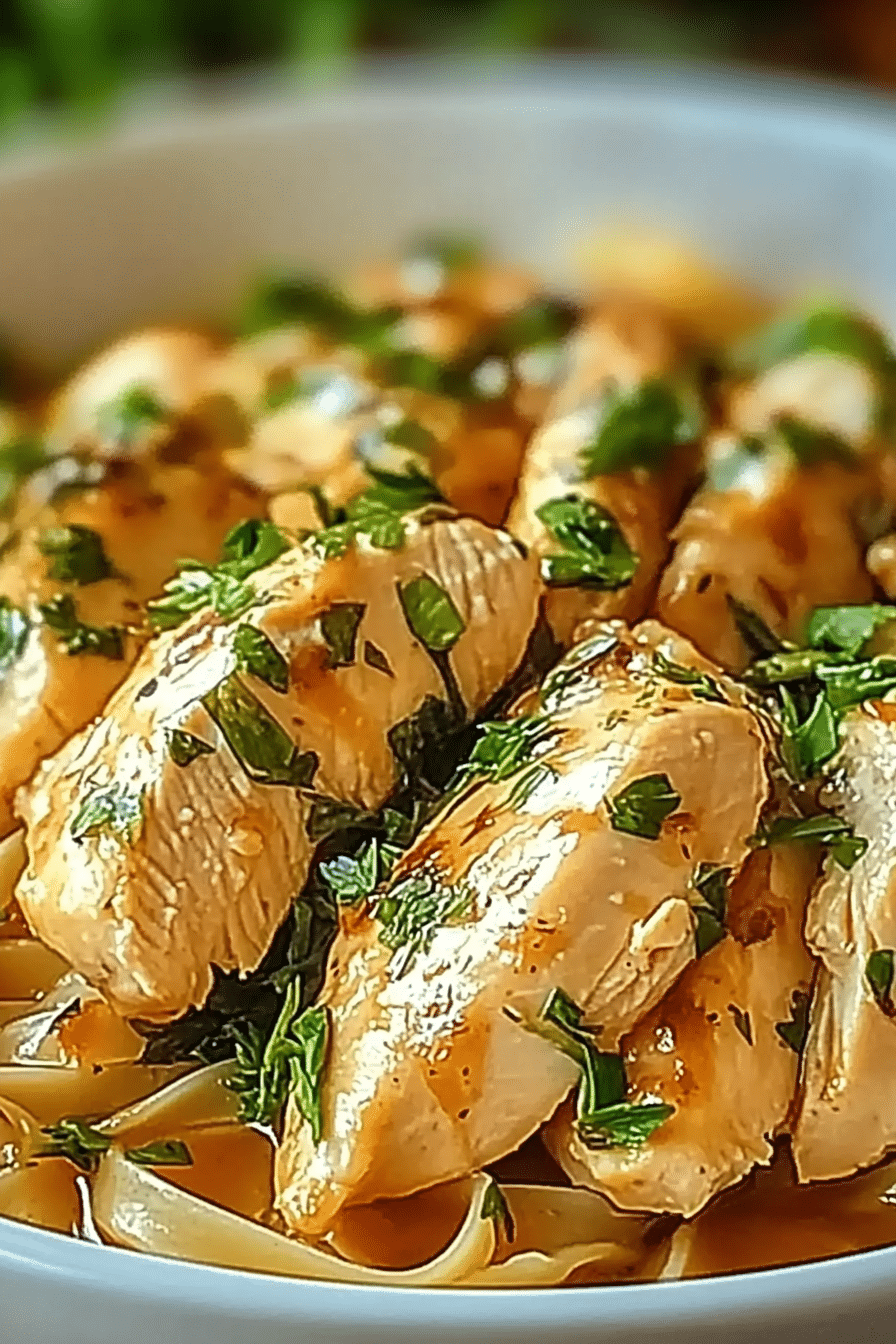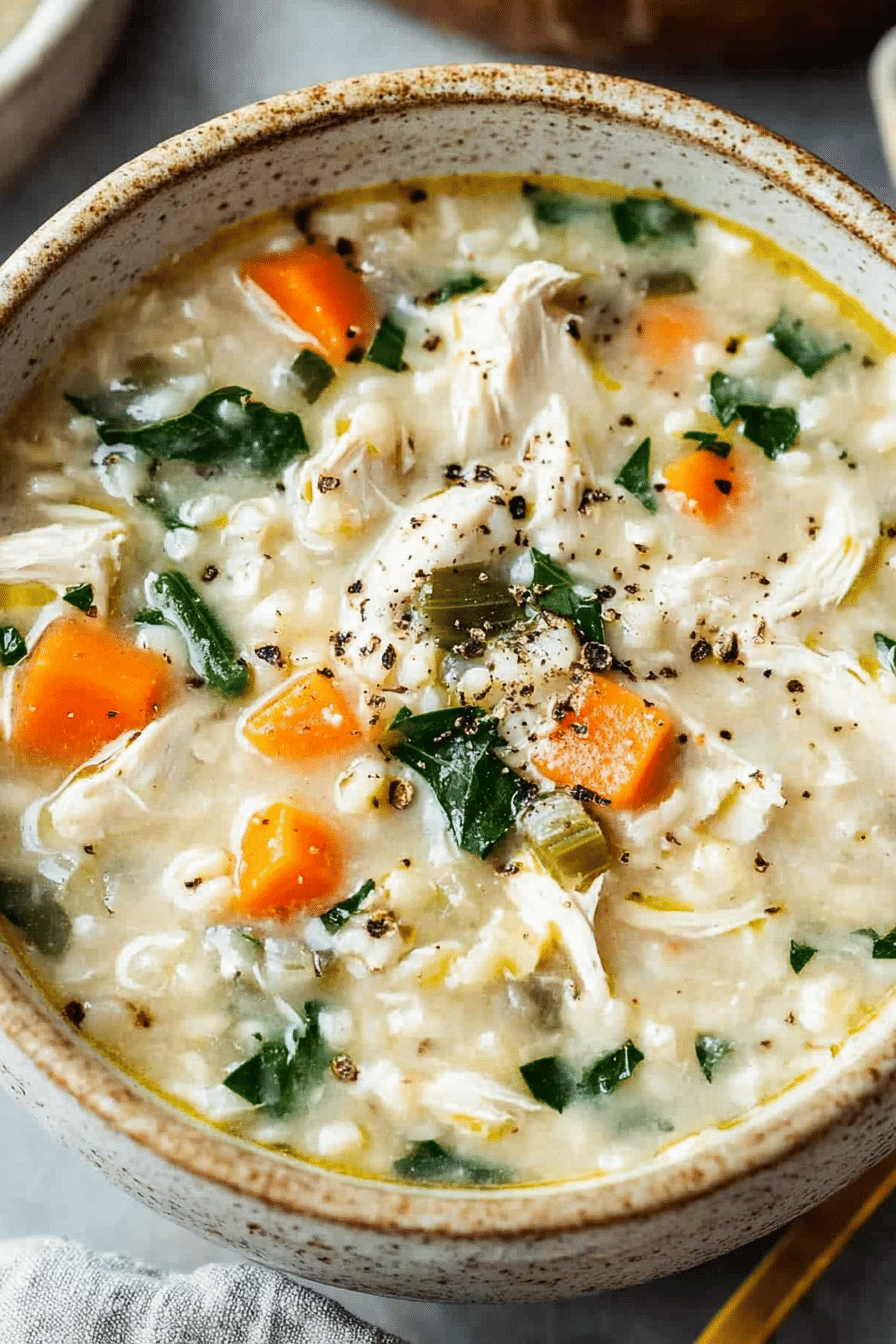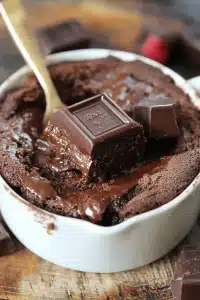The turning point for me was discovering how something as simple as glazed carrots could turn a weekday dinner into a warm, cozy memory. I remember my grandma standing at the stove, the kitchen smelling like caramel and butter, a little kiss of lemon in the air. The carrots came out glossy and bright, and somehow every crunch became a tiny celebration. This glaze isn’t fussy—it’s a hug on a plate. It’s the side dish I reach for when I’m short on time but want something special, and my kids actually ask for seconds. If you love a recipe that feels comforting yet easy, you’ll want this glazed carrots on repeat. It’s like the grown-up version of a favorite school lunch, only better because you control the sweet-tinish glaze and the lemony brightness that wakes up every bite. I always do this when I’m feeding a crowd: a skillet on the stove, a spoon ready, and the whole kitchen smelling like Sunday dinner even on a Tuesday.
Thank you for reading this post, don't forget to subscribe!What is Glazed Carrots?
Glazed carrots are simply carrots cooked in a quick, glossy syrup that coats each piece with a sweet-savory glaze. Think of it as carrots meeting a caramelized finish that highlights their natural sweetness without turning them into candied bricks. The name is a nod to the technique—glazing—where a liquid (usually butter, a touch of sugar or maple, and a splash of citrus) reduces down to a shiny glaze that clings to every forkful. It’s essentially carrots doing a tiny, delicious dance in a skillet. It’s approachable, it’s bright, and it works with everything from weeknight roasts to weeknight leftovers scrambled into a quick lunch bowl. My version keeps the glaze simple, flexible, and forgiving, so you can tweak sweetness or citrus to suit what you’ve got in the fridge. Think of it as a tiny act of dessert-brightness for your savory plate.
Why you’ll love this recipe?
What I love most about this glazed carrots is how accessible they feel while still tasting special. They’re the kind of side that makes a weeknight feel like an occasion without extra effort. Here are a few reasons this dish is a staple in my kitchen:
- Flavor: The glaze marries butter, a touch of brown sugar or maple, and a kiss of citrus for a glossy, deeply satisfying sweetness
- Simplicity: This comes together in one skillet in under 20 minutes, with almost no prep except peeling and cutting the carrots.
- Cost-efficiency: Carrots are affordable, and the glaze uses pantry-staple ingredients, so you’re not sinking big money into a fancy side.
- Versatility: It’s perfect alongside roast chicken, fish, pork, or tackle a vegetarian spread. It also works as a topping for polenta or mashed potatoes—imagine a silky bed of mash with a pop of glossy carrot glaze.
Family life loves this because it’s reliable: you can prep it ahead a little, and it still looks stunning on the plate. What I’ve learned over the years is that a little citrus zest at the end brightens the whole dish, and a sprinkle of chopped parsley makes it seem festive even on a Tuesday. The smell alone brings everyone to the kitchen, and the color makes the plate feel like a celebration. This isn’t one of those “show-off” sides; it’s a workhorse, a cozy little promise that dinner will feel comforting and complete.
How to Make Glazed Carrots
Quick Overview
Start with a hot skillet and melt a knob of butter. Add carrot pieces, a pinch of salt, and a quick glance of brown sugar or maple syrup. Pour in a splash of water or stock, cover briefly, and let everything simmer until the carrots are tender and the glaze thickens into a glossy coat. A final burst of citrus zest or a squeeze of lemon brightens the glaze in the last minute. It’s fast, it’s forgiving, and it fills the kitchen with that warm, nostalgic scent I love.
Ingredients
For the Carrots:
1 pound carrots (baby carrots or regular carrots cut into evenly sized batons or coins), peeled and sliced into uniform pieces for even cooking, 2 tablespoons unsalted butter, a pinch of salt, 1/4 cup water or vegetable stock, optional pinch of black pepper and a pinch of cinnamon for warmth.
For the Glaze:
2 tablespoons brown sugar or maple syrup, 1 to 2 tablespoons honey or extra maple for depth (optional), 1 tablespoon lemon juice or a splash of orange juice for brightness, 1 teaspoon lemon zest (optional but delightful).
For Finishing:
Chopped fresh parsley or dill for color, a small pinch of flaky salt to finish, and an extra squeeze of citrus if vibes lean citrusy that day.
Step-by-Step Instructions
Step 1: Preheat & Prep Pan
Grab a wide, heavy skillet and set it over medium heat. I like to start with a little heat because I want that butter to sizzle gently, not burn. While the pan heats, peel and slice the carrots into even pieces so they cook at the same pace. If you’re using baby carrots, give them a quick rinse and trim the ends. Having everything ready ensures you don’t play catch-up while the glaze starts to shimmer.
Step 2: Mix Dry Ingredients
In this recipe, the “dry ingredients” are a tiny pinch of salt and, if you’re feeling cozy, a whisper of cinnamon. These go straight into the pan as soon as the butter melts, helping to start the flavor development without any fussy measuring. I’ve learned that a light dusting is all you need—go bolder, and you can tip the glaze too far into spice territory for a simple carrot side.
Step 3: Mix Wet Ingredients
Whisk together the brown sugar (or maple), honey (if using), lemon juice, and lemon zest. This is your glaze base, so taste as you go. If you like a deeper caramel note, lean into the maple; if you want a brighter finish, lighten with more citrus. This mixture should feel balanced—sweet but with a touch of acidity to keep it lively on the palate.
Step 4: Combine
To the skillet, add the carrots in a single layer. Let them hit the butter for a minute so they start to take on some color. Then pour in the glaze mixture and your water or stock. The idea here is to give the carrots a little bath that will simmer down into a shiny, clingy glaze. Don’t pile the carrots too high; keep them spread out so they cook evenly and glaze evenly.
Step 5: Prepare Filling
Here, think of the glaze as the filling. Stir to coat the carrots, and if you notice the liquid getting too thick too quickly, add a splash more water or a tiny touch more stock. You’re aiming for a syrup that clings to the carrot surface without pooling on the pan. Taste as you go—this is where you decide if you want a touch more lemon zing or an extra spoon of sweetness.
Step 6: Layer & Swirl
As the liquid reduces, give the pan a few gentle swirls to coat every piece. If you’re feeling fancy, you can spoon the glaze over the carrot tops to create a light swirl pattern. This step is all about visual appeal and making sure every carrot nibble gets a glossy coat. If you see uneven spots, flip a few pieces so the glaze hits the uncoated edges.
“Made the glazed carrots tonight and wow — perfect weeknight dinner. Will definitely make again!”
Step 7: Bake
Okay, we’re not actually baking in the oven, but think of this as the simmer stage. Lower the heat a touch and let the carrots cook gently until they are just tender and glazed. A fork should slide in with only a little resistance, and the glaze should have thickened to a lacquer-like sheen around the carrots. If your glaze threatens to burn, splash in a bit more water and give it a quick stir to reincorporate the sugar and butter.
Step 8: Cool & Glaze
When the glaze looks glossy and clings to the carrot surfaces, turn off the heat and give it a final 1-2 minute rest in the pan. This lets the flavors settle a touch and the glaze firm up just enough to cling to the carrots when you plate them. If you’d like a crisp edge, you can finish with a last light squeeze of lemon and a tiny pinch of flaky salt right before serving.
Step 9: Slice & Serve
Plate the glazed carrots in a shallow dish or warm oval platter so the glaze pools around the carrots rather than drying into the pan. Scatter a little parsley or dill for color, and offer another lemon wedge on the side for guests who want a brighter finish. The moment you serve, the whole table will catch that sweet-savoury perfume—the kind of aroma that says, “Yes, dinner is ready, and yes, it’s comforting.”
What to Serve It With
Glazed carrots are a versatile side, and they shine with a lot of different mains. Here are some ideas that have become family favorites in our home, plus a few twists I’ve tested over the years.
For Breakfast: A savory brunch board benefits from a small jug of warm glazed carrots alongside gently scrambled eggs and herb potatoes. The glaze lends a touch of sweetness that pairs beautifully with tangy goat cheese or a dollop of yogurt on the side. It’s the kind of contrast that makes morning plates feel special without extra effort.
For Brunch: Serve glazed carrots with grilled sausages, a crisp radish salad, and crusty bread for dipping. If you’re doing a more refined spread, add a little orange zest and microgreens to lift the entire plate. The sweetness from the carrots acts as a natural counterpoint to salty, savory elements on your board.
As Dessert: Believe it or not, a small scoop of vanilla yogurt or a spoonful of mascarpone alongside a few glistening carrot coins can feel like a playful, light finish. If you’re hosting a dinner party, a tiny, citrus-kissed carrot glaze can be spooned over spoonfuls of vanilla yogurt with a sprinkle of pistachio for texture.
For Cozy Snacks: On late-night cravings, keep a skillet warm and offer warm glazed carrots as a bright, sweet-savory nibble. They’re better than a candy bar and they feel like a warm hug after a long day.
In our family, this side usually shows up with roast chicken and a bowl of mashed potatoes, but I’ve seen it steal the show with simple grilled fish as well. The scent of butter, caramel, and lemon is a universal comfort that invites everyone to the table.
Top Tips for Perfecting Your Glazed Carrots
Here are my tried-and-true refinements, built from countless weeknight tests and a few “aha” moments in the kitchen.
Carrot Prep: Uniform pieces matter. If you cut unevenly, some pieces will be undercooked while others overdo. I like diagonal slices about 1/2 inch thick for a nice balance between tenderness and texture. If you’re using baby carrots, you can leave them whole but trim the ends and give them a quick rinse.
Moisture Management: The glaze should cling, not pool. If you see excess liquid, uncover the pan for a minute or two to let it reduce, then re-cover and continue. Don’t be afraid to add a splash of water or stock if things get dry; the glaze will come back together with a little heat.
Zucchini Prep: Not relevant here; keep the focus on carrots. But if you’re using other root veg in the same pan, slice them to similar thickness so they finish at the same time.
Mixing Advice: The moment you add the glaze, stir gently to coat each piece. Overworking can break the carrot texture. You want glossy coats, not gluey sheets. A few gentle swirls are enough to distribute the glaze evenly.
Swirl Customization: Want a pretty marbled look on the plate? After the glaze thickens, lift the carrots and swirl the pan slightly to create a natural pattern on the surface. It’s a simple trick that elevates the presentation.
Ingredient Swaps: Maple syrup can replace brown sugar for a deeper, caramel note; a splash of orange juice brightens the glaze; if you’re watching sugar, use half maple and half water or stock to balance sweetness with savory. The glaze accepts substitutions well—treat it like a canvas.
“New family favorite! This glazed carrots was so flavorful and ridiculously easy. Crowd-pleaser for sure.”
Baking Tips: If you’re starting with a hot oven for other parts of the meal, you can finish the carrots in the roasting pan by tossing them with the glaze and returning to the oven for 5–6 minutes. Oven positioning matters little here, but a gentle hit of heat at the end helps the glaze cling for a glossy finish.
Glaze Variations: For a spiced version, add a pinch of cinnamon and a tiny pinch of cayenne. For a herbaceous note, finish with chopped chives or dill. For a citrus-forward glaze, swap the lemon for orange and add a tiny splash of zest. The glaze is forgiving, so improvise with what you’ve got.
Over the years, I’ve learned that this glaze is forgiving and forgiving is beautiful in a family kitchen. It doesn’t demand perfection; it asks for a little patience and a willingness to taste as you go. Trust me on this one—the result is a bright, soulful side that makes the whole plate feel complete and welcoming.
Storing and Reheating Tips
Glazed carrots are sturdy enough to hold their flavor, but they do best when you store them properly. Here’s how I keep them tasting fresh whether you’re serving them tonight or later in the week.
Room Temperature: If you’re serving within a couple of hours, you can keep the pan warm on a very low flame or warm plate. Don’t leave them out for more than two hours to preserve texture and flavor.
Refrigerator Storage: Store in an airtight container for up to 3–4 days. They’ll still taste great, though the glaze may thicken a bit as it chills. Reheat gently on the stove with a splash of water to loosen the glaze and rewarm evenly.
Freezer Instructions: Freezing glazed carrots isn’t ideal for texture, but if you must, freeze without glaze and recoat after reheating. Wrap well to prevent freezer burn and thaw in the fridge overnight before reheating.
Glaze Timing Advice: If you’re planning to reheat later, you can add the glaze fresh when you reheat to revive the glossy look. A quick simmer in a skillet with a little squeezed lemon can revitalize the glaze and keep the carrots vibrant.
In my kitchen, I often keep a small batch in the fridge to toss into a quick lunch bowl with quinoa, a handful of greens, and a slice of warm bread to mop up the glaze. It’s the kind of practical dish that makes weeknights feel a little brighter.
Frequently Asked Questions
Final Thoughts
Glazed carrots have become more than a side dish for me—they feel like a warm invitation to the table. The glossy, caramel-bright coating makes even simple carrots feel special, and the aroma is proof that good food is really about small moments: butter melting, citrus brightening the air, and a crowd gathering around the stove. This recipe is forgiving, flexible, and endlessly adaptable, which is why it’s earned a steady spot on our weeknights and holidays alike. If you try it, I’d love to hear how you customized the glaze—did you add orange zest, sesame seeds for crunch, or a touch of chili for warmth? Leave a comment, rate it, and tell me about your favorite pairing. And if you’re craving more cozy sides that pair with almost everything, explore my next-glazed favorites and keep building your own little kitchen ritual. Happy baking—and happy glazing!
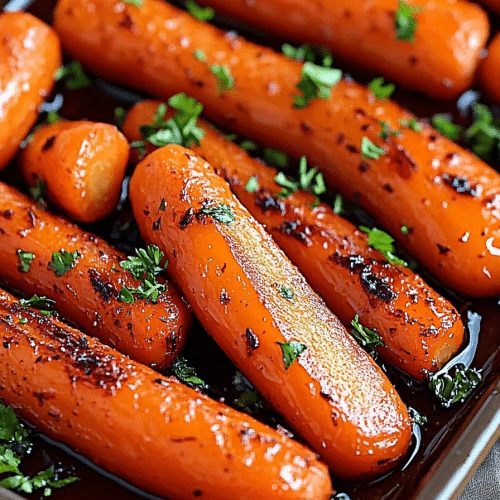
glazed carrots
Ingredients
Main Ingredients
- 2 pounds carrots peeled and sliced into 1/4-inch rounds
- 3 tablespoons unsalted butter
- 2 tablespoons brown sugar packed
- 0.5 cup chicken broth
- 0.25 teaspoon salt
- 0.125 teaspoon black pepper freshly ground
- 1 teaspoon fresh thyme chopped
Instructions
Preparation Steps
- In a large skillet over medium heat, melt the butter until it starts to foam.
- Add the brown sugar and stir until dissolved and bubbly, about 1 minute.
- Add the carrots, chicken broth, salt, pepper, and thyme. Stir gently to combine.
- Bring to a simmer, then reduce heat to low. Cover and cook for 15 minutes, stirring occasionally.
- Uncover and increase heat to medium. Cook for 5 more minutes, stirring frequently, until the liquid is reduced to a thick glaze and the carrots are tender.
- Taste and adjust seasoning if needed. Transfer to a serving dish and garnish with additional thyme if desired.


